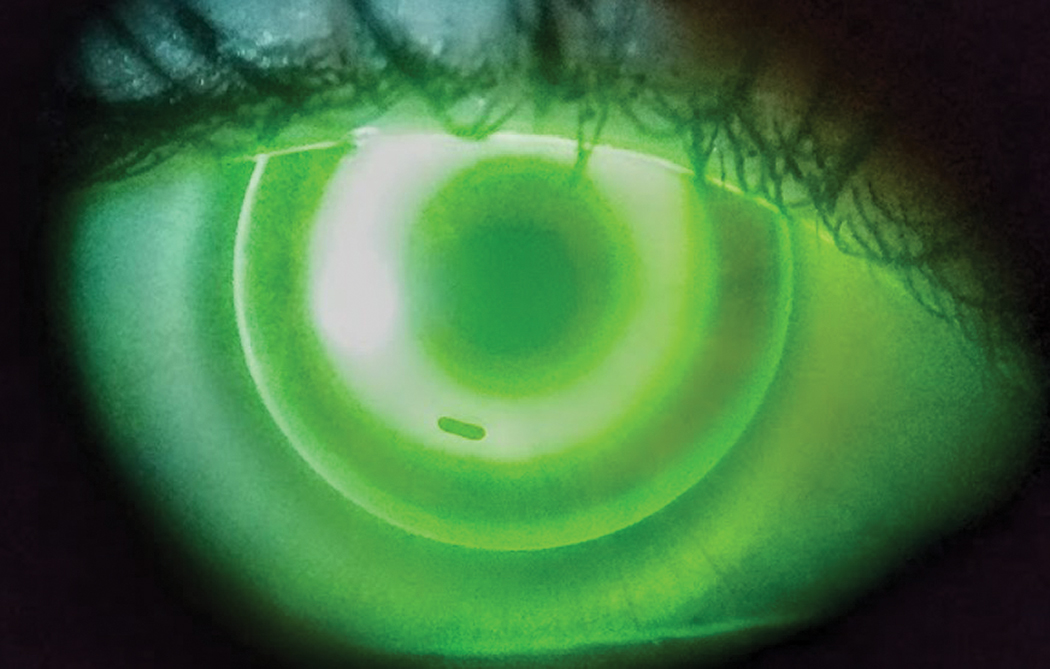 |
| Age at initial fitting played a large role in the success of orthokeratology wear. Photo: Dan Fuller, OD. Click image to enlarge. |
There are a number of factors that can have an impact on axial length among children with myopia who use overnight orthokeratology as a treatment. Findings from a recent retrospective analysis suggest that the most important factor is age when wearing an orthokeratology lens.
The study authors collected axial length and corneal aberration data on 78 eyes before and one year after orthokeratology. Patients included in this analysis were divided according to axial elongation. Individuals with an axial elongation of ≤0.25mm/year were placed in the effective group (n=47 eyes). All others were included in the ineffective group (n=31 eyes).
Baseline characteristics were as follows: age, sex, spherical equivalent refraction, pupil diameter, axial length and orthokeratology lens type. Tangential difference maps were used to compare corneal shape effects. At baseline and one year following therapy, the researchers compared group differences in higher‐order aberrations of a 4mm zone.
They observed significant differences between the two groups in the following areas: initial age of orthokeratology lens wear, type of orthokeratology lens, size of central flattening area, corneal total surface C12 (1‐year), corneal total surface C8 (1‐year), corneal total surface spherical aberration, change in total corneal surface C12 and change in front and total corneal surface spherical aberration.
“In summary, the initial age at orthokeratology lens fitting, type of orthokeratology lens, size of corneal flattening area and spherical aberration affect the myopia-controlling effect of orthokeratology lenses,” the study authors concluded in their Scientific Reports paper. “Notably, different types of orthokeratology lenses have different effects on myopia control.”
The research team acknowledged that the research was limited by its retrospective nature. They emphasized the need for further randomized studies on the “relationship between corneal shape and myopia-controlling effects among different designs of orthokeratology lenses,” which may help improve future lens designs.
Huang Z, Zhao W, Mao Y, et al. Factors influencing axial elongation in myopic children using overnight orthokeratology. Sci Rep. May 12, 2023. [Epub ahead of print]. |


